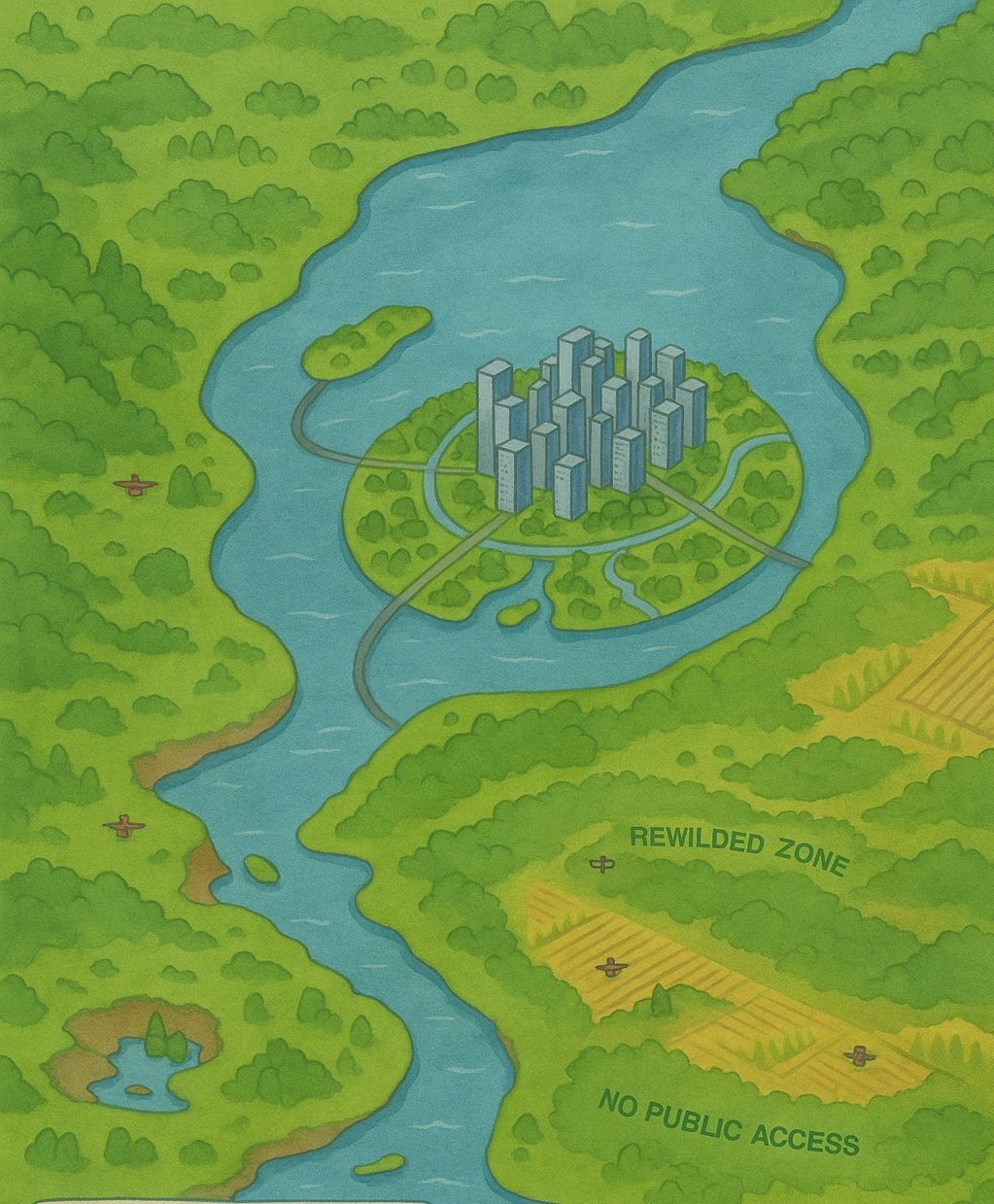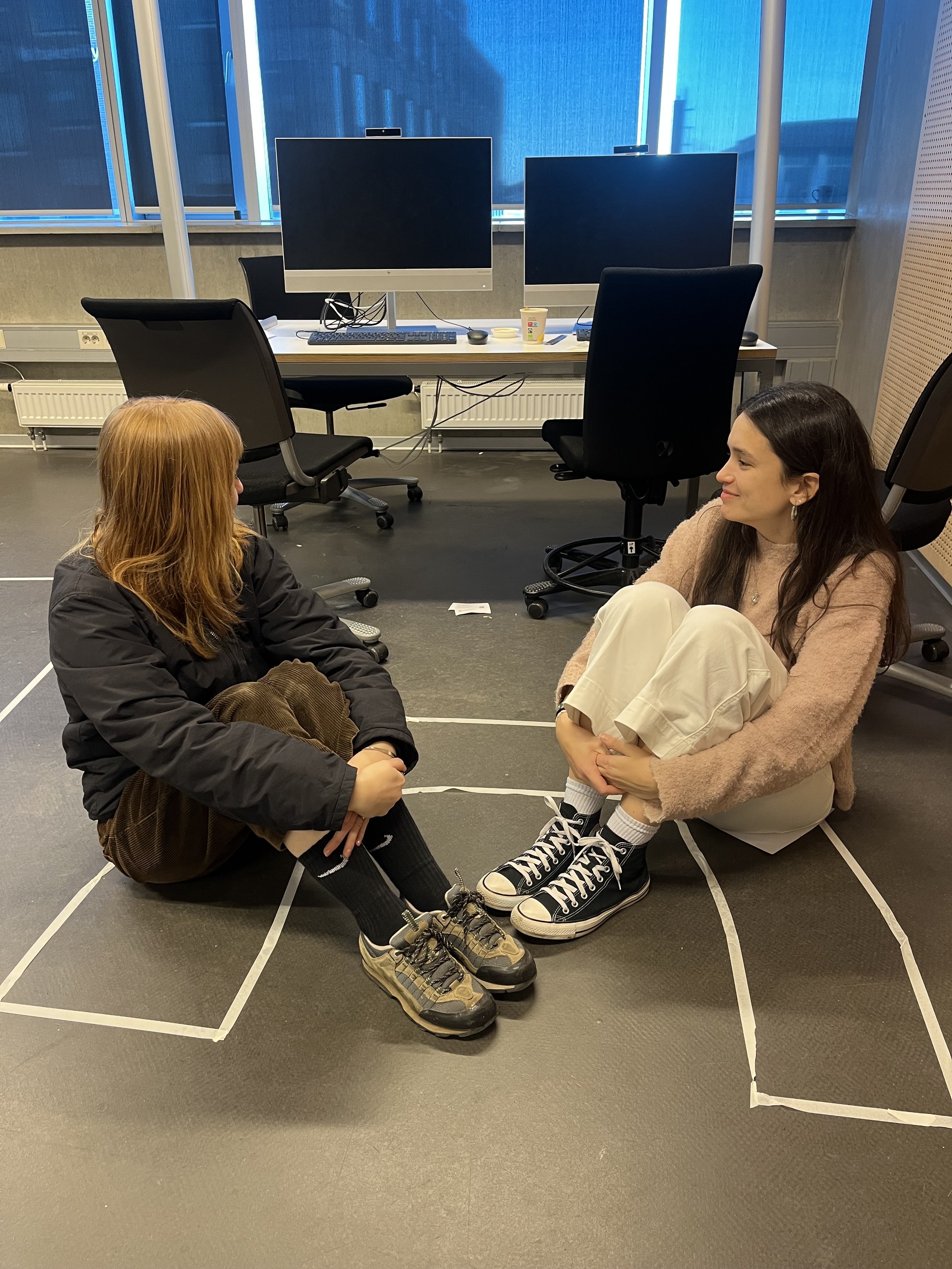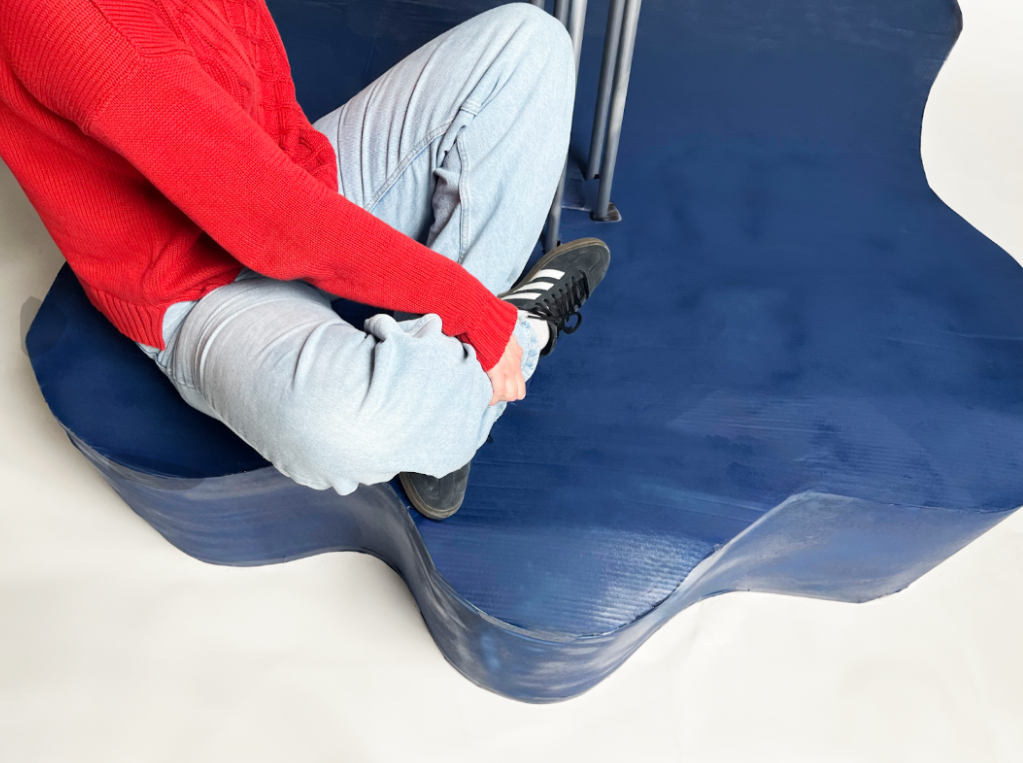
Audio Hope
A public seating installation designed for a speculative future city, where lack of purpose and emotional disconnection are widespread. The interactive seating collects and plays positive voice messages from users, creating a quiet space for shared presence and human connection in a media-driven society.
Summary
Role
Team Project
Duration
10 weeks
Focus Area
Speculative Design
Public Space Design
Research through Design
Year
2024
AI generated illustrated map overview of Megastad Nord.Problem
In this future, citizens live in AI-controlled megacities while nature is left untouched. Only 20% of the population works and lives on isolated islands, while the rest receive universal income and reside in crowded urban zones. Though basic needs are met, many struggle with loneliness, disconnection, and a lack of purpose.
Opportunity
How might we use speculative design to create a future public space that helps restore a sense of hope in citizens affected by constant media input?
My role
I was involved in the entire design process—from early research to building the final prototype. My contributions included:
- Developing sketches to explore form and user interaction.
- Focusing on the relationship between seating shape, emotional connection, and social behavior, and integrating these insights into the design.
- Assessing the design and refining visual elements to enhance clarity, coherence, and emotional impact.
Process Overview
Research & Insights
In the research phase, we combined speculative and observational methods to explore emotional, social, and spatial needs in Megastad Nord. Tools like A Day in the Life, Provotyping, and Future Philosophical Pills helped us view the scenario from a citizen’s perspective, while observing public seating in Malmö showed how placement, form, and color affected how people interacted with space.
Early provotyping sketches exploring ways for public interactionObservations of seating areas in MalmöA Day in The Life of "Dennis"Through these methods, we found that one of the major problems in Megastad Nord is a general sense of hopelessness, caused by a lack of social connection and positive experiences in everyday life. This absence of meaningful interaction creates a cycle of emotional strain and distrust. These insights became the starting point for our final concept.
Design Experiments
We conducted two design experiments to explore how people would emotionally and physically interact with our design concept.
Design Experiment 1
In Design Experiment 1, we explored how voice messages could create emotional connection. Ten participants recorded and listened to short messages with positive prompts. The poster was posted on social media platforms to invite participation. Many described the experience as uplifting and meaningful. This helped us confirm the relevance of having voice prompts in our final design.
Taped forms used for testing physical and social interactionParticipant Response
“It made me pause and think about something good, which is usually hard to do when we tend to focus on the negative in our day.”
Instruction poster used in Design Experiment 1Design Experiment 2
Curved and circular shapes encouraged more eye contact and interaction, while the traditional bench shape tended to discourage it.
In Design Experiment 2, we explored how different seating shapes affect social interaction. We used tape to simulate physical forms: a traditional bench, a curved bench, and a wavy circular area.
We observed how six people positioned themselves and whether eye contact or engagement changed depending on the form. This experiment helped us better understand how form influences social interactions.
The flowy circular shape was chosen because it allowed users to sit either facing each other or side by side, reducing the pressure of direct interaction while still enabling shared presence during listening.
Concept Development
We wanted our final concept to respond directly to the emotional and social needs identified in our research especially the sense of disconnection, lack of purpose and mistrust in Megastad Nord. We carried out a functional analysis and used it to guide the sketching of the final seating shape. Rather than designing a fixed-use object, we looked for shapes that invited multiple ways of sitting, gathering, or resting.
Sketches of final prototypeSketches of final prototypeAfter sketching different shapes for the final prototype, we chose the tree-like shape that best reflected our functional analysis and design goals.
We also discussed how the voice messages would be recorded, evolving from a simple QR code to using phone detection and proximity-based notifications. Returning to the future scenario helped us challenge assumptions and guide these decisions.
Functional AnalysisFinal Prototype
The final prototype is a sculptural bench designed to support quiet emotional connection in dense public housing areas. We chose an abstract tree-like shape to encourage open interaction between users and used natural wood with bold blue accents to balance warmth with visibility. Inspired by Malmö’s playful seating, we wanted the form to feel expressive but approachable.
Sound was chosen for its ability to carry emotional tone and make human connection feel real even in absence. Voice messages are played through speakers in the canopy when users press the button on display.
Final prototype rendering created in SolidWorks Visualize. Background generated with Adobe Firefly
Top view of the final prototype1:1 prototype in cardboard














